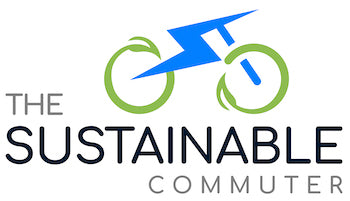
The Importance of Ferry and Waterway Transportation
Share
Introduction:
Ferry and waterway transportation have played a significant role in connecting people and facilitating trade throughout history. From ancient civilizations to modern times, ferries have served as a vital mode of transportation, enabling the movement of goods and passengers across bodies of water. In this blog post, we will explore the historical significance of ferries, the importance of passenger transport, the need for sustainable mobility solutions, the challenges faced by ferry and waterway transportation, and sustainable practices that can help mitigate these challenges.
I. Historical Significance of Ferries:
A. How Ferries Connected Ancient Civilizations:
- Ferries have been used since ancient times to connect civilizations separated by water bodies.
- Examples include the Nile River ferries in ancient Egypt, the ferry system in ancient Greece, and the Viking longships used for transportation and trade across the Baltic and North Seas.
- These ferries played a crucial role in facilitating cultural exchange, trade, and the spread of ideas.
B. Ferries' Impact on Trade and Economic Development:
- Ferries have historically been instrumental in promoting trade and economic development.
- They provide a cost-effective means of transporting goods across water bodies, connecting regions and facilitating regional and international trade.
- The ability to transport goods efficiently via ferries has led to economic growth and prosperity in coastal regions and islands.
II. Passenger Transport:
A. Types of Ferries:
- There are various types of ferries, including roll-on/roll-off (Ro-Ro) ferries, catamarans, hydrofoils, and passenger-only ferries.
- Ro-Ro ferries are commonly used to transport vehicles and passengers, while catamarans and hydrofoils are popular for high-speed passenger travel.
- Passenger-only ferries are primarily used for short-distance transportation, such as commuting between islands or along coastal routes.
B. Popular Ferry Routes:
- Ferry routes exist in various parts of the world, connecting islands, coastal regions, and even different countries.
- Some popular ferry routes include the Dover-Calais route in the English Channel, the Staten Island Ferry in New York City, and the Sydney-Hobart route in Australia.
- These routes serve as essential transportation links, bringing people together and facilitating tourism, business, and social connections.
C. Safety Regulations in Waterway Transportation:
- Safety regulations play a crucial role in ensuring the well-being of passengers and the smooth operation of ferry services.
- These regulations cover aspects such as vessel design and construction, crew training and certification, emergency preparedness, and passenger safety measures.
- Adhering to safety regulations is essential for maintaining public trust in ferry and waterway transportation and preventing accidents and incidents.
III. Sustainable Mobility Solutions:
A. Reimagining Ferry and Waterway Transportation:
- In recent years, there has been a growing emphasis on sustainable mobility solutions in the ferry and waterway transportation sector.
- This includes the use of cleaner fuels, the adoption of electric and hybrid propulsion systems, and the integration of renewable energy sources.
- Reimagining ferry and waterway transportation with sustainability in mind can help reduce carbon emissions, minimize environmental impacts, and create a greener and more sustainable mode of transport.
B. Benefits of Sustainable Mobility Solutions:
- Embracing sustainable mobility solutions in ferry and waterway transportation offers numerous benefits.
- It can help reduce air pollution and greenhouse gas emissions, improving air quality and mitigating the effects of climate change.
- Sustainable practices can also lead to cost savings in the long run, as renewable energy sources become more affordable and efficient.
IV. Challenges Faced by Ferry and Waterway Transportation:
A. Infrastructure:
- One of the main challenges faced by ferry and waterway transportation is the lack of adequate infrastructure.
- Insufficient ferry terminals, berthing facilities, and navigational aids can hinder the smooth operation of ferry services and limit their capacity to meet growing passenger and cargo demand.
- Investing in infrastructure development is crucial to support the expansion and modernization of ferry and waterway transportation.
B. Regulations:
- The regulatory landscape for ferry and waterway transportation can be complex, with different jurisdictions and authorities governing different aspects of the industry.
- Harmonizing regulations and streamlining processes can help create a more conducive environment for ferry services to operate efficiently and sustainably.
C. Competition:
- Ferry and waterway transportation often face competition from other modes of transport, such as air travel and road transportation.
- Ensuring that ferry services remain competitive requires offering attractive fares, convenient schedules, and high-quality services that meet the needs of passengers and shippers.
D. Environmental Sustainability:
- Ferry and waterway transportation have the potential to cause environmental harm, particularly in terms of carbon emissions and marine pollution.
- Addressing these environmental challenges requires the adoption of sustainable practices, such as reducing emissions through cleaner fuels or electrification, and minimizing waste and pollution through effective waste management and spill prevention measures.
VI. Factors That Can Change the Outcome:
A. Weather Conditions:
- Weather conditions can significantly impact ferry and waterway transportation.
- Adverse weather, such as storms and rough seas, can cause disruptions and safety concerns, leading to delays or cancellations of ferry services.
- Monitoring weather conditions and implementing appropriate safety measures are essential to ensure the well-being of passengers and crew.
B. Technological Innovations:
- Technological advancements have the potential to revolutionize ferry and waterway transportation.
- From the development of more fuel-efficient vessels to the integration of smart technologies for navigation and safety, innovation can enhance the efficiency, safety, and sustainability of ferry services.
C. Policies and Regulations:
- Government policies and regulations play a critical role in shaping the future of ferry and waterway transportation.
- Supportive policies, such as financial incentives for adopting sustainable practices or regulations that promote fair competition, can encourage the development and growth of the sector.
VII. Sustainable Practices for Ferry and Waterway Transportation:
A. Energy-Efficient Vessels:
- Investing in energy-efficient vessels can help reduce fuel consumption and carbon emissions in ferry and waterway transportation.
- Advanced hull designs, propulsion systems, and onboard energy management systems can contribute to significant energy savings and environmental benefits.
B. Utilization of Renewable Energy Sources:
- Harnessing renewable energy sources, such as solar, wind, or hydroelectric power, can help decarbonize ferry and waterway transportation.
- Installing renewable energy infrastructure at ferry terminals or integrating renewable energy systems onboard vessels can contribute to a greener and more sustainable transportation sector.
C. Minimizing Waste and Pollution:
- Implementing effective waste management and pollution prevention measures is crucial for maintaining the environmental integrity of ferry and waterway transportation.
- This includes proper handling and disposal of waste materials, implementing spill prevention measures, and adopting environmentally friendly cleaning and maintenance practices.
VIII. Conclusion:
A. Recap of the Importance of Ferry and Waterway Transportation:
- Ferry and waterway transportation have a rich historical significance, connecting ancient civilizations and facilitating trade and economic development.
- Today, ferry services continue to play a vital role in passenger transport, connecting islands, coastal regions, and countries, and enabling social, cultural, and economic exchanges.
B. The Need for Sustainable Practices:
- As the world grapples with the challenges of climate change and environmental degradation, it is imperative to reimagine ferry and waterway transportation with sustainability in mind.
- Embracing sustainable mobility solutions, addressing infrastructure needs, harmonizing regulations, and minimizing environmental impacts are essential for a greener, more efficient, and resilient ferry and waterway transportation sector.
References:
[External Source]
